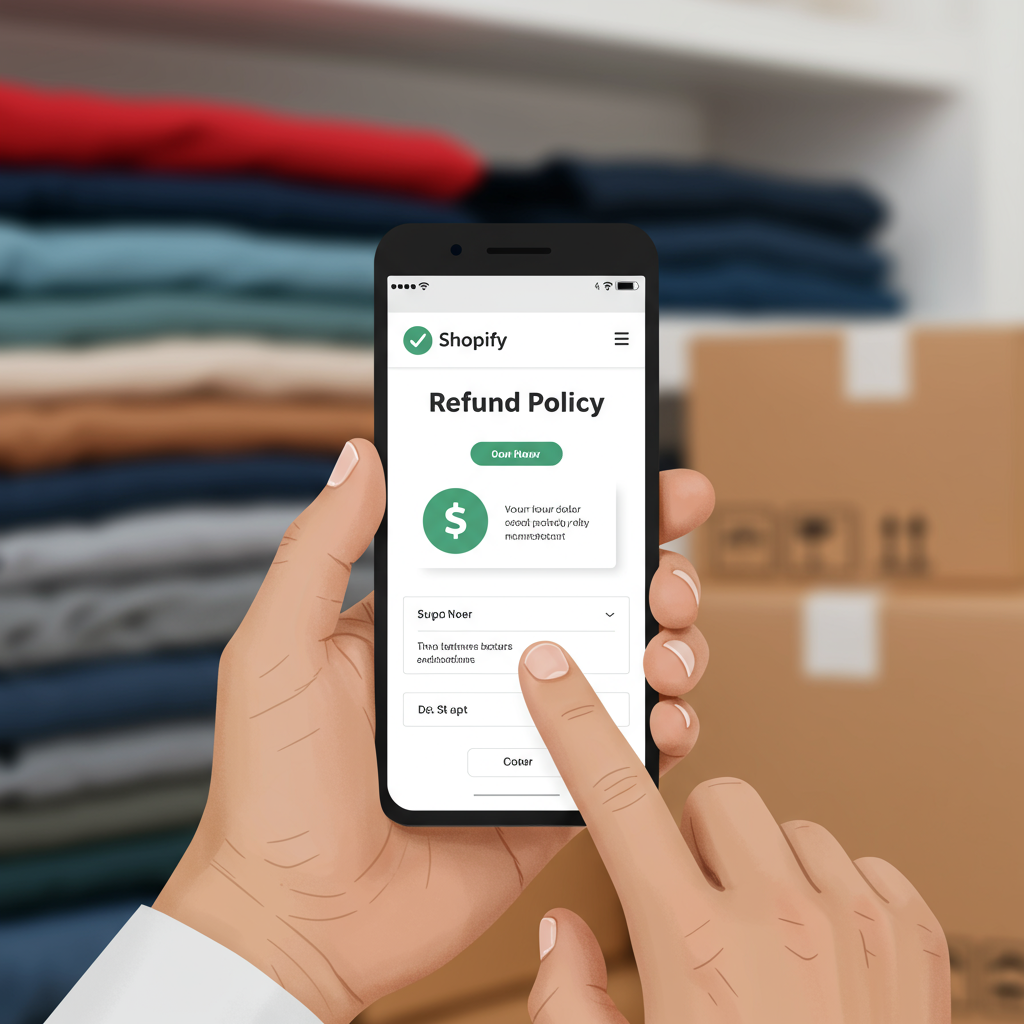Unlock the secrets to a seamless return process and build lasting customer trust on your Shopify store.
As an e-commerce merchant, I know firsthand that managing returns and refunds can feel like navigating a complex maze. It’s often seen as a necessary evil, a cost of doing business.
However, I’ve come to realize that a well-defined and transparent return and refund policy isn’t just about mitigating losses; it’s a powerful tool for building customer trust and loyalty.
For those of us running our stores on Shopify, understanding how to effectively set up and manage these policies within the platform is absolutely crucial.
Today, I want to walk you through everything I’ve learned about Shopify’s return and refund capabilities, offering practical advice to help you streamline your process and enhance your customer experience.
First, let’s address why a clear policy is so important. It sets expectations for your customers, reducing confusion and potential disputes down the line.
A strong policy also protects your business. It outlines the conditions under which you accept returns, preventing fraudulent claims and ensuring you maintain control over your inventory.
From a legal standpoint, in many regions, consumer protection laws mandate that businesses provide clear information about returns. Having a policy readily available helps you comply with these regulations.
So, what are the essential elements I believe every robust return and refund policy should include? Let’s break them down.
**Timeframe for Returns:** How many days do customers have to initiate a return from the date of purchase or delivery? Common periods are 14, 30, or 60 days. I recommend choosing a period that balances customer convenience with your operational needs.
**Condition of Returned Items:** Clearly state that items must be in their original condition, unworn, unwashed, with tags attached, and in original packaging. Specify if certain items (e.g., intimates, personalized goods, digital products) are non-returnable.
**Return Process:** Outline the step-by-step instructions for customers. Do they need to contact you first? Is there a return authorization (RMA) number required? Where should they send the item?
**Refund Method:** Explain how refunds will be issued – typically back to the original payment method. Specify if shipping costs are refundable and if there are any restocking fees.
**Exchanges:** If you offer exchanges, detail the process. Is it for the same item in a different size/color, or can they exchange for a different product?
**Damaged or Defective Items:** Have a separate clause for items that arrive damaged or are defective. This usually involves you covering return shipping and offering a full refund or replacement.
Now, let’s talk about implementing this on Shopify. Shopify provides a dedicated section for your legal policies, which is where your return policy should live.
Navigate to **Settings > Policies** in your Shopify admin. Here, you’ll find fields for your Refund Policy, Privacy Policy, Terms of Service, and Shipping Policy.
I always advise writing your policy content in a clear, concise, and easy-to-understand language. Avoid legal jargon where possible.
Once you’ve written your policy, paste it into the “Refund policy” section. Shopify will automatically link to this policy in your store’s footer and at checkout, which is incredibly convenient.
Beyond just displaying the policy, managing actual returns and refunds happens directly within your Shopify admin.
When a customer requests a return, you’ll typically go to the specific order in your **Orders** section.
From there, you’ll see options to “Refund” the order. You can issue a full refund or a partial refund, which is useful if you’re only refunding part of an order or deducting a restocking fee.
Shopify also allows you to mark items as “Restocked” when processing a refund, which helps keep your inventory accurate. This is a small but mighty feature I rely on heavily.
For return shipping, you have a few options. You can provide customers with a pre-paid return label, which you can generate through Shopify Shipping (if available in your region) or a third-party app.
Alternatively, you can ask customers to pay for return shipping, or you can reimburse them after receiving the item. Your policy should clearly state who is responsible for return shipping costs.
Communication is key throughout the return process. I make sure to send automated email updates to customers when their return is received and when their refund has been processed.
Shopify’s order status pages and notification settings can be configured to handle much of this automatically, saving you valuable time.
What do you think about this article so far? I’m curious to hear your thoughts on managing returns.
For more complex return scenarios, or if you want to automate parts of the process, I’ve found that Shopify’s App Store offers a wealth of solutions. Apps can help with return portals, automated label generation, and even managing exchanges.
Remember, while Shopify provides the framework, the content and fairness of your policy are entirely up to you. Aim for a policy that is fair to both your customers and your business.
Handling chargebacks and disputes is another area where a clear policy helps. If a customer initiates a chargeback, you can present your policy and proof of delivery/return process to your payment processor.
In conclusion, embracing returns and refunds as an integral part of your customer service strategy, rather than just a chore, can significantly impact your brand’s reputation.
By leveraging Shopify’s built-in tools and maintaining a transparent, customer-friendly policy, you can turn a potentially negative experience into an opportunity to build lasting customer relationships.
I hope this detailed guide helps you navigate the world of Shopify returns and refunds with greater confidence and efficiency.






